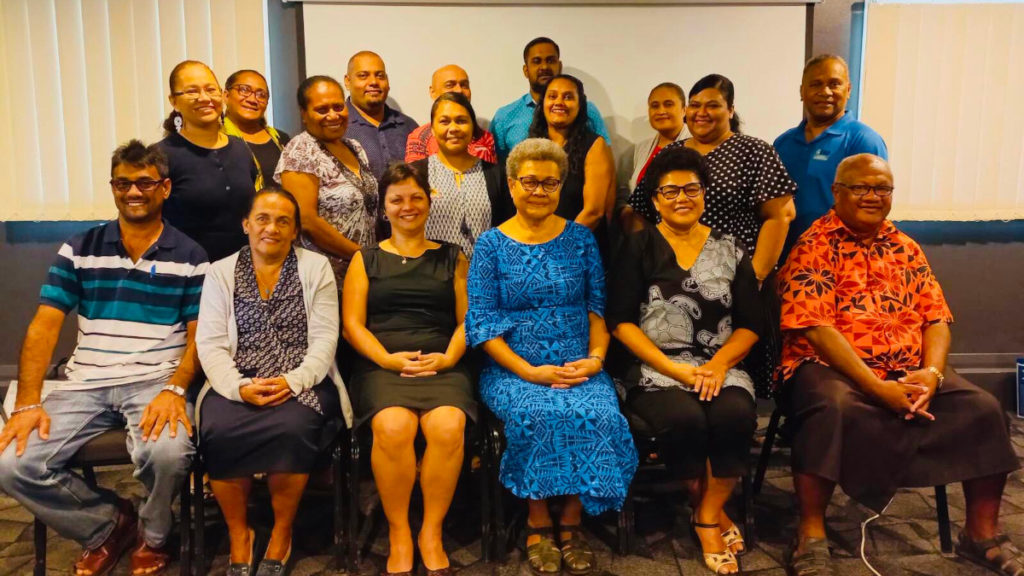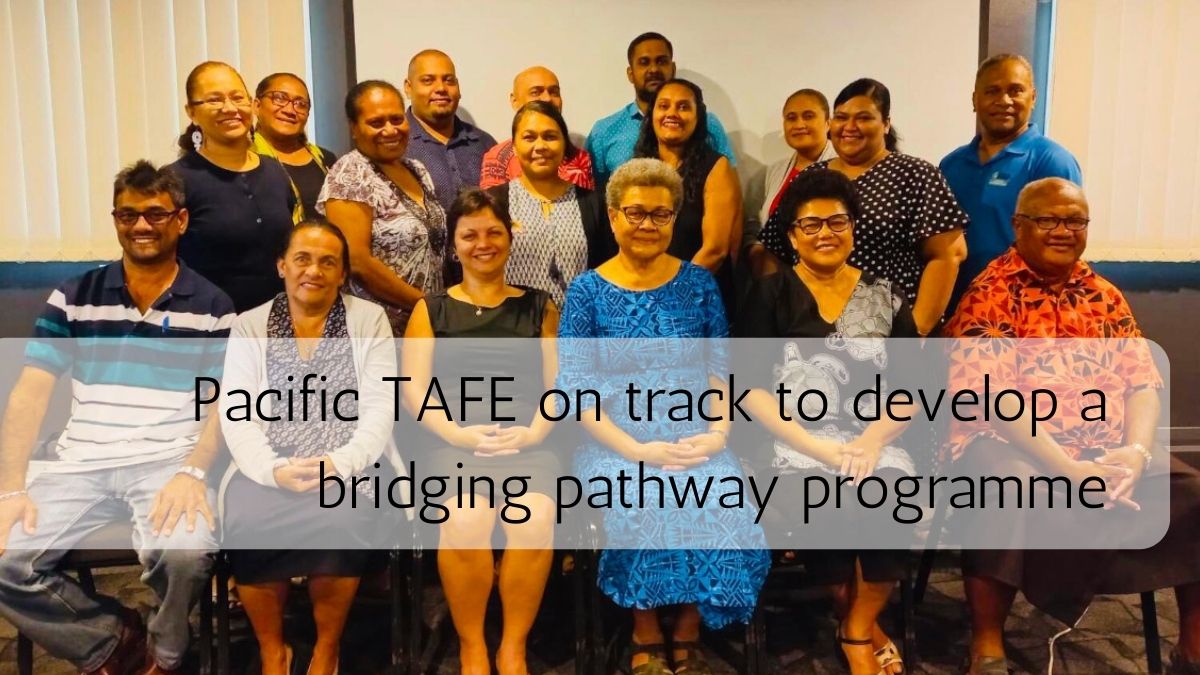The Pacific Technical and Further Education (Pacific-TAFE) is working on developing an innovative bridging pathway programme, an activity under the Pacific Regional Education Framework (PacREF) “Moving towards Education 2030”, that will benefit young people who have dropped out of high school qualify for tertiary education studies.
Under the PacREF Policy Area 2, Learning Pathways, Pacific -TAFE aims to develop and introduce a regionally relevant and sustainable intervention bridging programme for young people who are “out of school” to allow them to access further educational opportunities.
To push ahead with this initiative, Pacific-TAFE successfully held a four-day retreat at the Pearl Resort on 3-7 August, bringing together a team of coordinators from the College of Foundation Studies led by their Head of College and an Instructional Designer from the USP Centre for Flexible Learning (CFL), to develop courses for the programme.
Input regarding embedding literacy skills in the courses was provided by a trainer from the International Development in Oceania Committee (IDOC- Standing Committee of the International Literacy Association (ILA), Dr Apolonia Tamata.
Ms Sela said the literacy skills session was a critical reminder of the different information texts that may be used in the courses, their relevant language features and accompanying teaching strategies.
This activity ensures the programme incorporates these skills and that they are delivered effectively to assist students not only to reenter formal schooling for a higher academic qualification but also take up work-ready qualifications should they wish to do so.
The retreat allowed the writing team to share their progress and their plans to tackle the tasks towards completion. They also provided input on embedding literacy skills. With the different contributions, the team became more aware of areas they could improve on in the courses they were preparing.
Pacific TAFE Director, Ms Susan Sela
The team is involved in preparing the courses and an instructor guide to accompany each course. These will be available in hard and electronic copies.
Participants were monitored by a time management system known as the Pomodoro technique, which is geared towards helping the writers manage and work within a specific time slot to complete tasks.
The University of the South Pacific’s Deputy Vice-Chancellor and Vice-President (Education), Professor Jito Vanualailai, joined the retreat on the fourth day and provided critical feedback reminding the team of the eight skills of Education 4.0 and other essential aspects of the bridging programme, such as entry requirements, progression and timing.
The University aligns its teaching and learning approach with the emerging fourth industrial revolution that focuses on innovative technology, artificial intelligence and robotics, all of which now impact the everyday lives of Pacific people.
For USP and Pacific-TAFE to continue to produce successful graduates, they must prepare students who will be better positioned for a world where these cyber-physical systems are prevalent across all industries and can contribute economically and socially towards the development of their communities.
Professor Vanualailai
Pacific TAFE hopes to pilot the bridging pathway programme by 2023. The New Zealand Ministry of Foreign Affairs and Trade and the Global Partnership for Education fund this activity.
Pacific-TAFE, Institute of Education (IOE) and the Discipline of Education are USP implementing agencies of PacREF.
You can access more information on PacREF here https://pacref.org/


